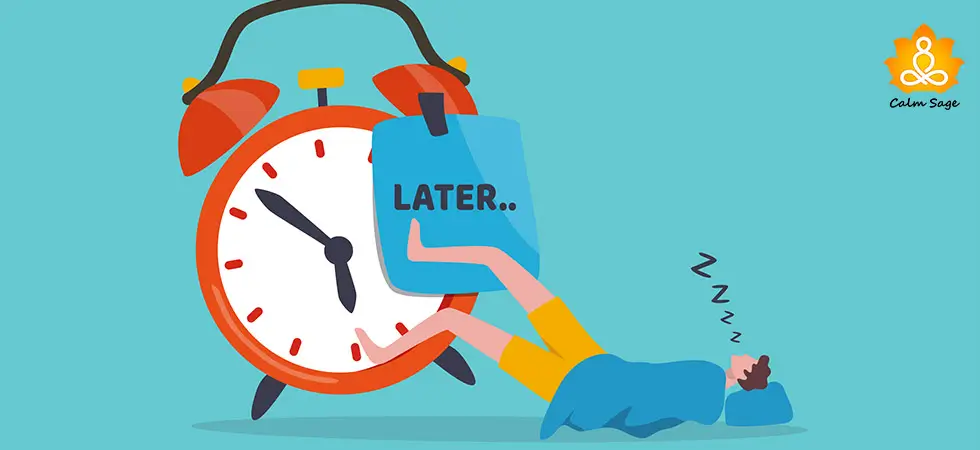What is Status Quo Bias, and How Does it Affect you

Have you ever wondered why you don’t like changing things? Why do you prefer making the same choices when someone asks you to consider alternatives? It happens because of the status quo cognitive bias, which doesn’t let you change and accept change.
Indeed, changing and accepting change is hard. This is why people generally refrain from changing and are okay with doing or selecting things they are familiar with.
Even if it means being stuck, taking the long route to work, eating the same food daily, or meeting the same people, they are okay with it. For them, change = being uncomfortable. This is why they unwelcome change and love doing things and living in their comfort zone.
What is Status Quo Bias?
After conducting a controlled experiment on a group of people, Richard Zeckhauser and William Samuelsonfound that rather than looking for options that will bring change or progress, people are more comfortable making decisions that will keep the current circumstances intact. This was when the term status quo bias was introduced in 1988.
Status quo bias makes individuals resistant to change and impacts their decision-making abilities. For them, changing means increasing the chances of failure. Therefore, even if their personal growth is hampered, they will make familiar choices based on their knowledge. The chances of failure will be reduced when doing so, and they don’t have to leave their comfort zone.
However, when people start to follow this practice, they lose out on the potential benefits that outweigh the risks involved in changing. Therefore, it is essential to understand how status quo bias is formed and how it influences decision-making and reduces our choices.
How is Status Quo Bias formed?
Different principles are used to explain the status quo bias. This includes cognitive misperceptions and psychological commitments. Below are the common reasons:
1. Loss aversion bias: People with this bias mainly focus on what they can lose rather than achieve. When given choices, they focus more on what they will be losing by making those choices. Hence, they fear abandoning the status quo, and rather than adapting to change, they feel okay staying in the same place.
2. Mere Exposure Effect: People generally find it easy to work with things they are familiar with. This is where the Mere Exposure Effect comes into play. People stop changing as they feel they will lose connection with familiar things.
3. Anticipated Regret or Blame: People often fear that they will not be liked or blamed for breakups and conflicts because they have changed. Due to this, they avoid the potential of changing and choose to remain as they are. A typical example is customer behavior when customers keep a familiar product or service because they think changing might harm them.
4. Cognitive Dissonance: When faced with inconsistent thoughts, cognitive dissonance occurs. It is an uncomfortable feeling that most people do not wish to experience, so they will do anything possible to minimize it. Sometimes, they will avoid thoughts of change because they make them uncomfortable and disturb their cognitive consistency.
Even if individuals see one option as more valuable than their chosen one, they will keep following old patterns, as going with something new will cause cognitive dissonance. As the value of two decisions will conflict, the individual sticks with the status quo to reduce the cognitive dissonance.
Rationality vs. Irrationality
Sometimes, even with status quo bias, individuals make a rational choice. For example, when an individual has to maintain the current situation because there will be a cost involved in the transition, and the gain will be less than the amount invested, they choose to stay. However, when the individual ignores the choices that will improve the situation and will give more personal growth or gain, the irrational status quo bias comes into play.
Impacts of the Status Quo Bias
To some extent, status quo bias helps keep mental resources free for other important tasks. Still, this simplified decision-making prevents growth because instead of making a choice, the person is okay in their comfort zone. Following old patterns means you miss out on opportunities and cognitive growth. However, as status quo bias affects each individual differently, some pay attention to it while others ignore it.
When an individual stays in status quo bias for a long, it is a sign that you are not putting much effort into making decisions. It is beneficial as you don’t have to use your mental resources in simple tasks. However, personal growth pauses when it becomes the default way to process things.
1. Systemic effects
Status quo bias is, by and large, a systematic issue. Individuals’ norms are based on a system and are accepted in a structural form. No one questions them.
In most companies, people work 5 days a week, Monday through Friday. However, recent studies show productivity increases when people work 4 days a week. But when people were asked to work for 4 days instead of 5, they were not ready to change. Companies resisted this change as they wanted the employees to keep coming for five days.
In some cases, when companies tried adopting this change, employees didn’t agree. This shows that people hesitate to adjust to the new changes even when there is a benefit. Even if it means working more and less on production, they are okay as they want to challenge the existing hierarchy and established norms.
2. Financial
When people fail to earn more, they question why they cannot. Status quo bias is the answer. As people fail to change and take advantage of the investment and saving opportunities, they end up stuck. What they do is rather than invest the money in some new things, they invest in secure funds where they don’t have to take the risk, which impacts their finances.
How to Deal With Status Quo Bias?
To overcome and deal with this status quo bias, you must understand the world around you, the norms structure, and the proper rules and regulations. When you understand them, navigating life becomes easy. If the same thing goes on and on without any change, the motivation level decreases, and even the person gets stuck. Therefore, to overcome status quo bias –
- Challenge yourself. It is easy to choose an established norm, but you grow personally when you take the risk rather than sticking with what you have been doing.
- Be ready to change.
- Keep yourself motivated because without that, you will not change, nor will there be any innovation.
- Take charge of your life and make decisions.
- Stop fearing change and breaking the chains set by norms.
- Test the water even if it feels scary. Nothing wrong will happen. You will learn something new.
- Be aware of the pros and cons of change. Weigh all the options and understand how change will affect you. This will prevent you from opting for the default option and prepare yourself for the change.
A word from CalmSage
Like other cognitive biases, status quo bias has its advantages. It prevents people from utilizing mental resources unnecessarily and saves them from taking risks, keeping them protected. However, when people start to avoid risks due to being voiceless, their mental capabilities are negatively affected. Also, they are prevented from growing personally.
Therefore, before you become a follower, whenever you get an opportunity to change, analyze it and look at the benefits. You can learn how the change will affect you and then consciously choose.
You will know the best option only when you take the first step. If you keep following what is set, things will never change. Understand what others want to say, be open to change, and have an open mindset. Once you do it everything will fall into place.




















